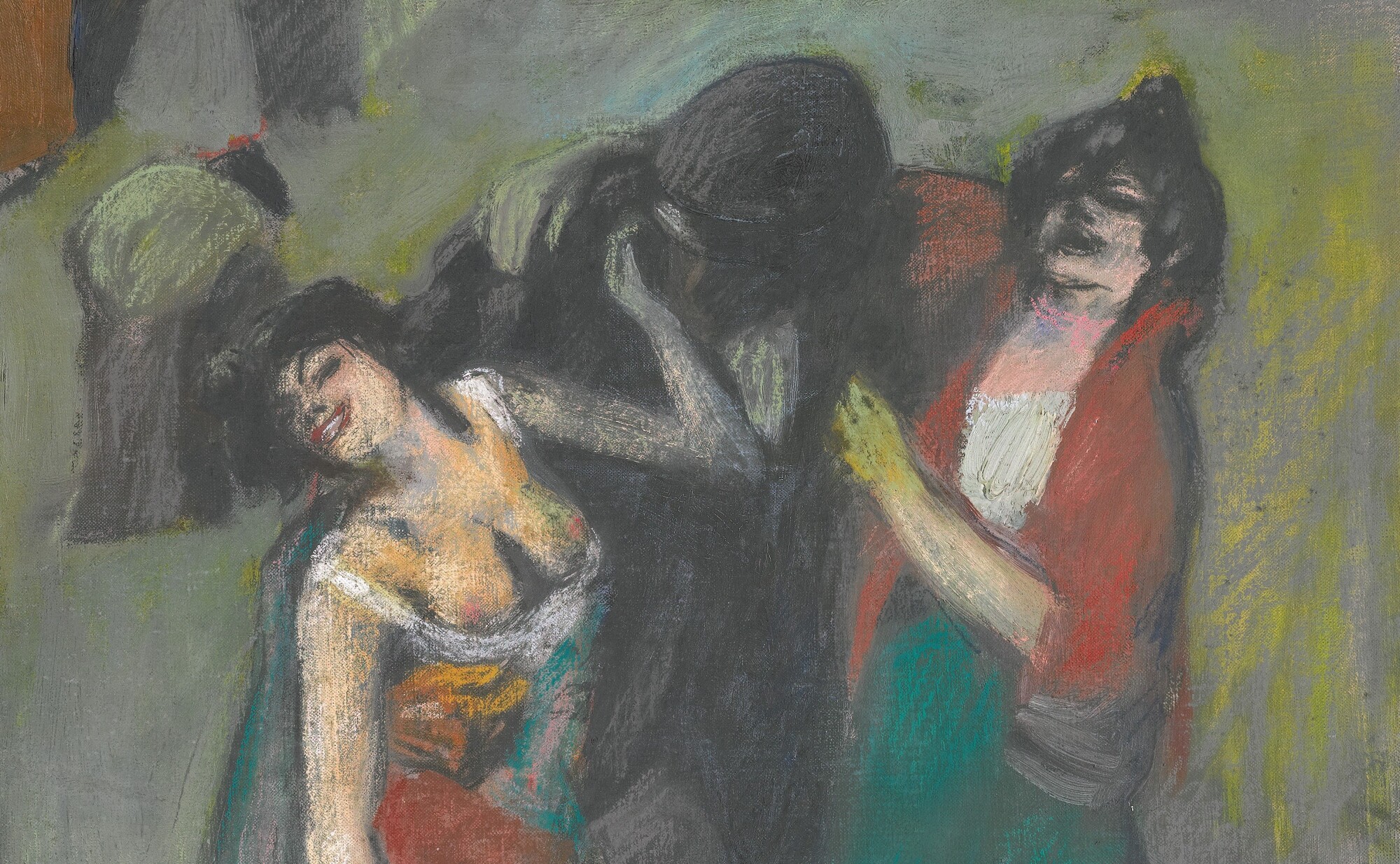
P
icasso executed Morphinomanes during his first trip to Paris in the fall of 1900, where he traveled with his close friend Carles Casagemas and remained for three months. At this time, the teenage Picasso was working as an artist and illustrator in Madrid, yet he was keenly aware of the need to establish a foothold in the Parisian art world in order to advance his career. During this sojourn in the French capital, the subject of an upcoming exhibition at the Solomon R. Guggenheim Museum, he visited the Louvre as well as commercial galleries including Durand-Ruel, Bernheim-Jeune and Ambroise Vollard. At Vollard's, the young painter was particularly drawn to works of Henri de Toulouse-Lautrec, who captured the excitement of the city in his swiftly executed drawings of the cabarets and assomoirs of Montmartre.
Picasso’s hookers, with their mascara and lipstick, their cheek-to-cheek smooching, project a sexuality that is distinctly twentieth-century.
The nightlife of Paris proved to be a revelation to Picasso. His large oil Le Moulin de la Galette, now in the collection of The Solomon R. Guggenheim Museum, conveyed the dynamism and energy he found in the cafés and concert halls of Montmartre as well as the dark underside of this popular gathering place which had been previously disregarded in previous portrayals by Pierre-Auguste Renoir. According to John Richardson, “within weeks of arriving in Paris the nineteen-year-old Spaniard had established his right to a place in the modern French tradition… Picasso takes refuge in Spanish chiaroscuro—darkness lit up with incandescent splashes of crimson and yellow... [he] evokes an erotic ambiance all the more exciting for being faintly menacing... Whereas Toulouse-Lautrec’s gaslit dancers embody the ta-ra-ra-boom-de-ay of the 1890s, Picasso’s hookers, with their mascara and lipstick, their cheek-to-cheek smooching, project a sexuality that is distinctly twentieth century” (John Richardson, A Life of Picasso, New York 1991, vol. I, p. 167).
The Evolution of Le Moulin de la Galette
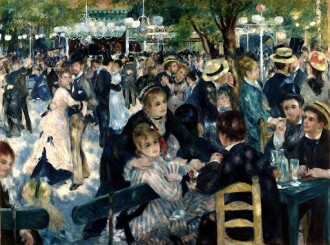
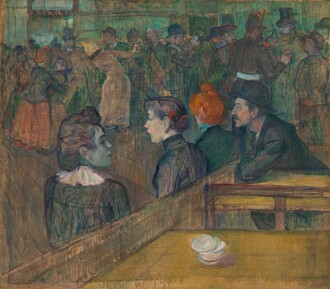
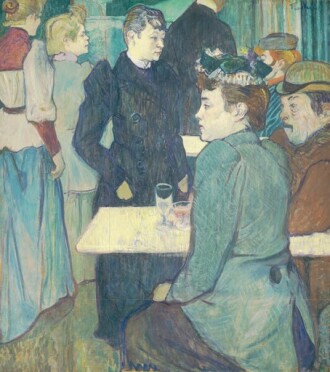
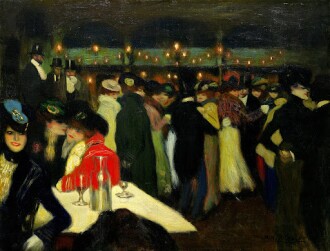
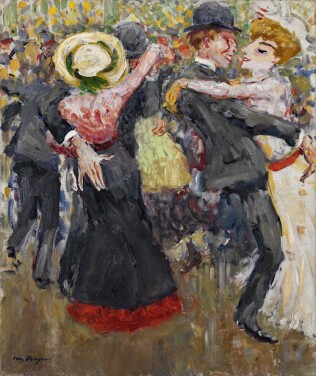
Executed during the same trip to Paris as Le Moulin de la Galette, the present work seems to follow the scantily clad yet heavily made up figures from the gaslit dancehall to the drunken revelry of the end of the evening. The flower loosely held in the hand of the female figure at left remains the only token of a more sober moment—a touch of innocence in an otherwise debaucherous setting. Indeed, Paris brought about overwhelming creative possibilities for Picasso. As John Richardson wrote, "That raw sexuality could be harnessed to art was one of the major revelations of Paris” (ibid., p. 168). As the title suggests, these three figures are completely uninhibited and inebriated with the help of the drug opium, which we would commonly refer to in pharmacological terms as ’morphine’. Readily available in Paris, Picasso himself would become a regular user of opium throughout his Blue and Rose periods.
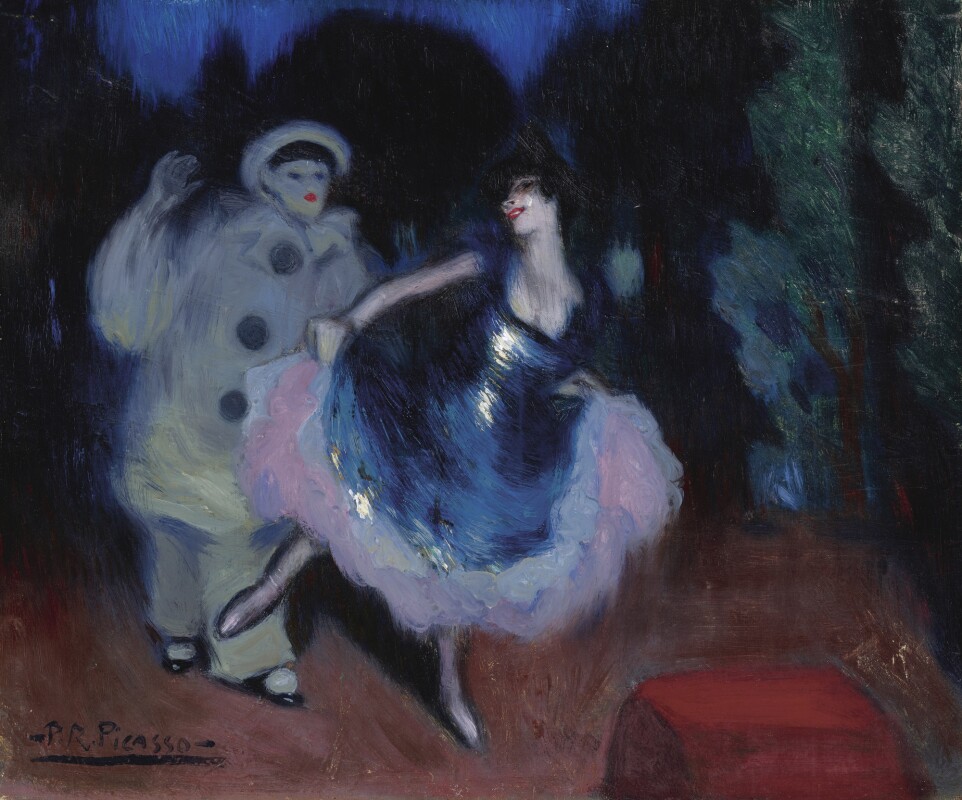
© 2023 Estate of Pablo Picasso / Artists Rights Society (ARS), New York
Carles Casagemas, who had accompanied Picasso to Paris, regularly sought out the relief of morphine to distract himself from the trials and tribulations of his romantic life, for which he has remained infamous. After struggling with abuse of alcohol and narcotics, in 1901, just a year after the present work was executed, Casagemas would take his own life. The death of his close friend was a devastating blow to the artist, and after painting the nightlife of the city, complete with prostitutes, opium and the déclassé haunts of Montmartre, it was this trauma that is recognized as the catalyst for Picasso’s Blue Period of 1901 to 1904. The somber works of the Blue Period are foreshadowed in Morphinomanes, not only in its subject matter, but also through the composition of the contorted body of the woman at left and the overall muted palette. In 1903, Picasso painted La Vie in which the two figures at the left can be recognized as Casagemas and his lover Germaine Pichot. The subject of this work has been interpreted as an allegory of sacred versus profane love, the cycle of life, and the melancholy that accompanies it. This dizzying mixture of professional success and personal tragedy, along with the carnal pleasures of youth and the inexorable sadness of mortality, brought Picasso's creative genius to the climax of his early career.







